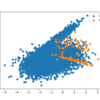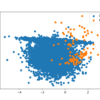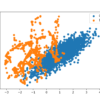Bagging is an ensemble algorithm that fits multiple models on different subsets of a training dataset, then combines the predictions from all models. Random forest is an extension of bagging that also randomly selects subsets of features used in each data sample. Both bagging and random forests have proven effective on a wide range of […]










